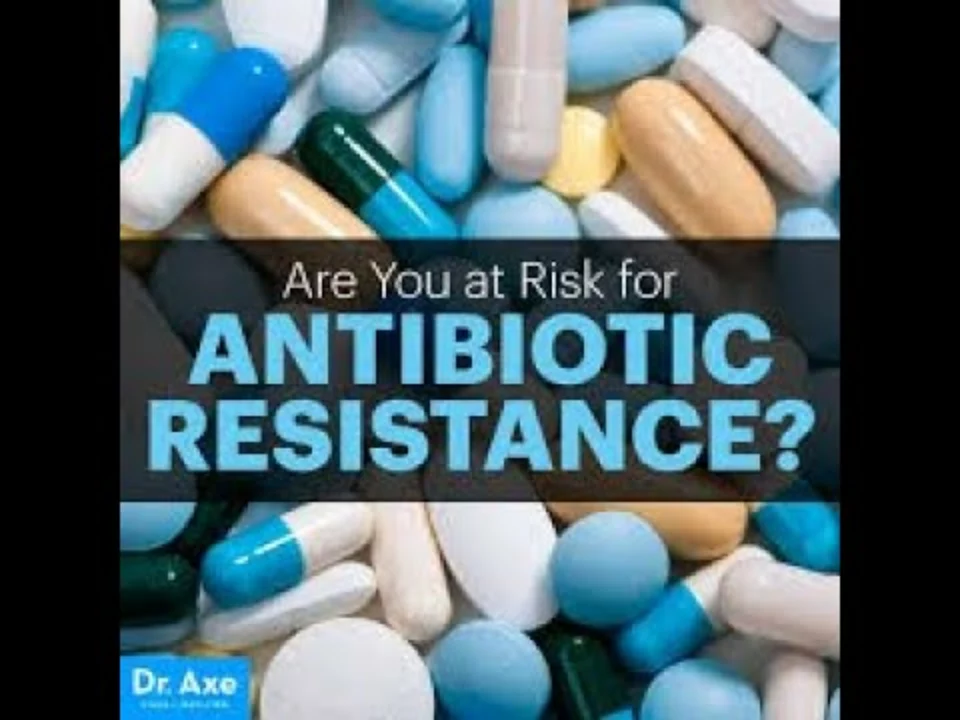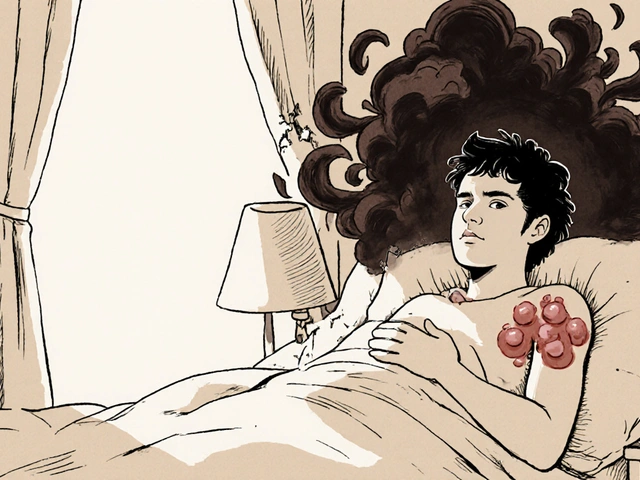Understanding Chloramphenicol and Its Uses
As we all know, antibiotics play a crucial role in modern medicine, and chloramphenicol is one such antibiotic that has been around for quite some time. Chloramphenicol is a broad-spectrum antibiotic, which means it is effective against a wide range of bacteria. It is primarily used to treat bacterial infections such as meningitis, typhoid fever, and certain eye infections like conjunctivitis. However, it is not as commonly used today due to the development of more effective and safer antibiotics. This doesn't mean that chloramphenicol is obsolete, as it still has a role to play in the fight against antibiotic resistance.
Antibiotic resistance is a significant concern for public health, as it threatens the efficacy of the antibiotics we rely on to combat bacterial infections. As bacteria evolve and develop resistance to the antibiotics we use, it becomes increasingly difficult to treat these infections effectively. This is where chloramphenicol comes into the picture, as it can be used as a last-resort treatment option when other antibiotics have failed.
How Chloramphenicol Works Against Bacteria
Chloramphenicol works by inhibiting protein synthesis in bacteria, which is essential for their growth and reproduction. It does this by binding to the 50S subunit of the bacterial ribosome, preventing the formation of new proteins necessary for the bacteria to survive and reproduce. As a result, the bacterial population is unable to grow, and the infection can be more easily controlled by the body's immune system.
One of the reasons chloramphenicol is effective against a wide range of bacteria is due to its unique mechanism of action. Many bacteria have not yet developed resistance to chloramphenicol, making it a valuable tool in the fight against antibiotic resistance. However, it is crucial to use this antibiotic judiciously, as overuse can contribute to the development of resistance.
The Risk of Side Effects and Toxicity
Although chloramphenicol can be effective against antibiotic-resistant bacteria, it is not without its risks. One of the most significant concerns with using chloramphenicol is the potential for side effects and toxicity. Some of the common side effects include nausea, vomiting, diarrhea, and allergic reactions such as rash or fever. However, more severe side effects can also occur, such as bone marrow suppression, leading to a decrease in the production of blood cells and an increased risk of infection.
Another critical concern with chloramphenicol is the risk of a rare but serious side effect called "gray baby syndrome." This condition occurs when the drug accumulates in a newborn's body and causes a range of symptoms, including vomiting, difficulty breathing, and even death. Due to these risks, chloramphenicol should only be used when absolutely necessary and under strict medical supervision.
Responsible Use of Chloramphenicol to Combat Resistance
As with any antibiotic, it is essential to use chloramphenicol responsibly to minimize the risk of antibiotic resistance. This means only using the drug when it is truly needed and following the prescribed dosage and duration of treatment. It is crucial to remember that antibiotics are not effective against viral infections, such as the common cold or flu, and should not be used in these cases.
Additionally, healthcare providers must stay informed about the latest research and guidelines regarding the use of chloramphenicol and other antibiotics. This will help ensure that these powerful drugs are used appropriately and only when absolutely necessary, helping to preserve their effectiveness for future generations.
Alternative Treatments and the Future of Antibiotics
While chloramphenicol can be a valuable tool in the fight against antibiotic resistance, it is essential to continue researching and developing new antibiotics and alternative treatments. This may include exploring novel compounds with unique mechanisms of action or investing in the development of vaccines and other preventative measures to reduce the need for antibiotics in the first place.
Moreover, it is crucial to promote responsible antibiotic use at every level, from individual patients to healthcare providers and the pharmaceutical industry. By working together to combat antibiotic resistance, we can help ensure that we have effective treatments for bacterial infections for years to come.
Conclusion: The Role of Chloramphenicol in the Fight Against Antibiotic Resistance
Chloramphenicol, while not as commonly used as it once was, still has a vital role to play in the fight against antibiotic resistance. Its broad-spectrum activity and unique mechanism of action make it a valuable option for treating infections when other antibiotics have failed. However, it is crucial to use chloramphenicol responsibly and be aware of its potential side effects and toxicity.
Ultimately, we must continue to explore new treatments and strategies to combat antibiotic resistance, ensuring that we have effective tools to fight bacterial infections and protect public health. By working together and using antibiotics responsibly, we can help preserve the power of these life-saving drugs for future generations.





Katherine Stapp
THIS IS WHY AMERICA NEEDS TO STOP OUTSOURCING MEDICAL SUPPLIES!!! 🇺🇸💀 Chloramphenicol is a LIFE-SAVER and we’re letting big pharma push us toward overpriced junk. If you’re not using it, you’re letting bacteria win. #PatriotMedicine
Frank De Silva
It's amusing how casually people invoke 'last-resort antibiotic' as if it were some noble relic of pre-corporate medicine. The truth is chloramphenicol is a blunt instrument with a 1 in 25,000 chance of killing you-while being marginally effective against strains that are already declining in prevalence. The real issue is our collective refusal to fund novel antibiotic research.
KJ Miller
I really appreciate this breakdown. It's easy to forget that antibiotics aren't just tools-they're part of a delicate ecosystem. Chloramphenicol is like that old Swiss Army knife your grandpa kept in his drawer: not flashy, not perfect, but when everything else fails? It still works. We need to treat it like that-respectfully, sparingly, and with deep gratitude for its existence. 🙏
Claire Battista
Honestly, I just read this and felt so much calmer. Like, we’re scared of antibiotics because they’re powerful, but that doesn’t mean we should throw them out. We just need to be smarter. Thanks for writing this. 💛
Erin DeGroot
The risk of gray baby syndrome is not merely a footnote-it is a haunting reminder of the cost of pharmaceutical negligence in the mid-20th century. To use chloramphenicol responsibly is not just a clinical decision; it is an ethical imperative that demands humility, vigilance, and a profound respect for biological complexity.
Stephanie Bryant
ok but can we talk about how hard it is to even FIND chloramphenicol in the US anymore? I had to order it from canada for my dog’s eye infection and the pharmacy charged me $200 for 5ml 😭 my vet was like 'lol good luck' and handed me a coupon for amoxicillin. someone pls fix this
Drashti patel
In India, we still use chloramphenicol for typhoid in rural clinics where ceftriaxone is unaffordable. It’s not about nostalgia-it’s about survival. Every time we lose access to these older drugs, we lose a lifeline for people who don’t live in cities with 24/7 ICUs. Antibiotic resistance isn’t a theoretical debate-it’s someone’s child not breathing because the only drug that worked is now a 'last-resort' because no one wanted to pay for it.
Kaitlin Crockett
We need more research on synergistic combinations-maybe chloramphenicol with phage therapy could reduce resistance development.